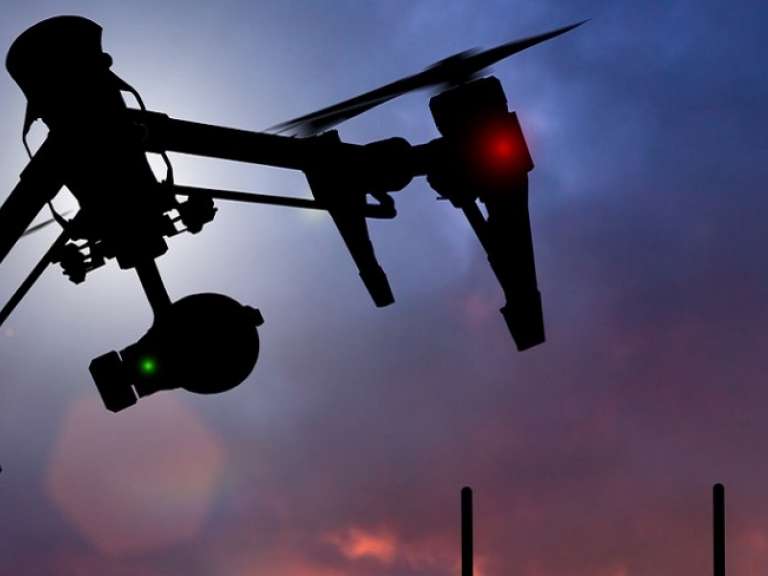Automation Technology: Revolutionize Maintenance and Cleaning in the Power Sector
Jeremy BowdenAutomation technology in the form of drones and robots has clear potential in the power sector.

Automation technology in the form of unmanned aircraft systems (UAS) like drones and robots has made great strides over recent years. Currently, the most mature drone technology within the power generation world is heat recovery steam generator (HRSG) and boiler inspection. Though drone use in assessing other power plant equipment remains in the early stages, research shows drones can promote worker and plant safety, reduce inspection time and costs, and enable difficult-to-access area examinations, all while assessing and extending the life of a plant and its components. As drone costs fall and capabilities rise, the potential for these systems to play a major role in time-intensive and dangerous operational tasks is clear.
Using infrared thermal-imaging, a drone can rapidly survey a solar array and locate malfunctioning panels. Automated robotic technology not only identifies damaged panels but can also locally store maintenance records and other data. This data can then be sent to the cloud, leading to faster fix times and improved overall operational efficiency.
SenseFly is one drone provider employing advanced automated technology to inspect solar panels at a rooftop photo-voltaic installation in Switzerland. The exercise involves flying one of its eBee mapping drones over 4,000 panels to identify hot spots—a faster and more cost-effective approach than the alternatives of panel-by-panel inspections on foot or aerial surveys with a manned aircraft.
As dirty solar panels prevent maximum sunlight absorption, drones can gauge solar panel performance, then decide whether cleaning is worthwhile, and, if required, even clean the panels. One German drone-based cleaning technology flies back and forth over a panel, with delicate brushes sweeping dust from its surface and helping the panel generate more power.
Though the market is new and it's not known exactly how many generators are using drones for operation and maintenance, the field is undoubtedly growing. Navigant Research estimated in a recent report that global revenue for drones and robotics technologies used in the transmission and distribution sector would grow from $131.7 million in 2015 to $4.1 billion by 2024, and in the wind sector to over $6 billion.
The US Electric Power Research Institute (EPRI) published a report in August 2015 assessing the opportunities for drones in solar plant operations and maintenance, and concluded that, "Although it is unlikely that UAS can be used to perform corrective maintenance tasks (i.e., physical repairs), they are well positioned to speed up preventative maintenance practices."
Current projects to improve such automation technology include research at the University of North Carolina at Charlotte (UNCC), with technical assistance from EPRI, to develop a radiation-resistant, remote-controlled drone called the Severe Mobile Accident Investigator (SAMI).
EPRI is also assisting in the development of drones for inspecting power lines, transmission towers, fossil plant boilers, wind turbines, solar panels, hydroelectric dams, and cooling towers, including landing on and attaching to boiler tube walls and rollers for close-up views. Modern commercial drones have stabilizing technology and GPS systems that allow them to hover safely even when an operator is not at the controls, follow precise flight plans, and avoid restricted or unsafe airspace. For instance, in cases specific to power plants, if a flight path is over exhaust stacks, the temperatures will destroy the aircraft immediately.
Currently, automated technology is more easily applied outside of the United States, however, as noted by the National Conference of State Legislatures, the US Federal Aviation Administration (FAA) has begun to license the limited use of drones in the energy industry, for example, in limited line-of-sight inspection deployments. They're also continuing to distribute permits for utilities and drone vendors to inspect power lines, transmission towers, and power plants.
Plant operators must decide whether to purchase their own drones and develop internal expertise to fly them, or use service providers. However, outsourced or managed in-house, users must be aware of developing regulations. While the FAA regulates commercial use of drones, fully autonomous operation is still not permitted. With a steady increase in state and local regulations governing drone use, it may be wise to consult a lawyer who is familiar with the specific local restrictions before the first flight.
In addition to dispelling cost and safety concerns that often lead to inspection deferral—leaving operators without relevant and up-to-date asset information—automation technology can improve critical infrastructure inspection quality, all while speeding up procedures and enhancing overall operational efficiency. As drone use continues to grow, research will continue to refine its capabilities.
From Uber to AirBNB, the sharing economy has changed a range of industries and sparked collaborative consumption in the power industry.
Battery systems for grid-scale energy storage is becoming economically viable in optimizing the performance of gas turbines.